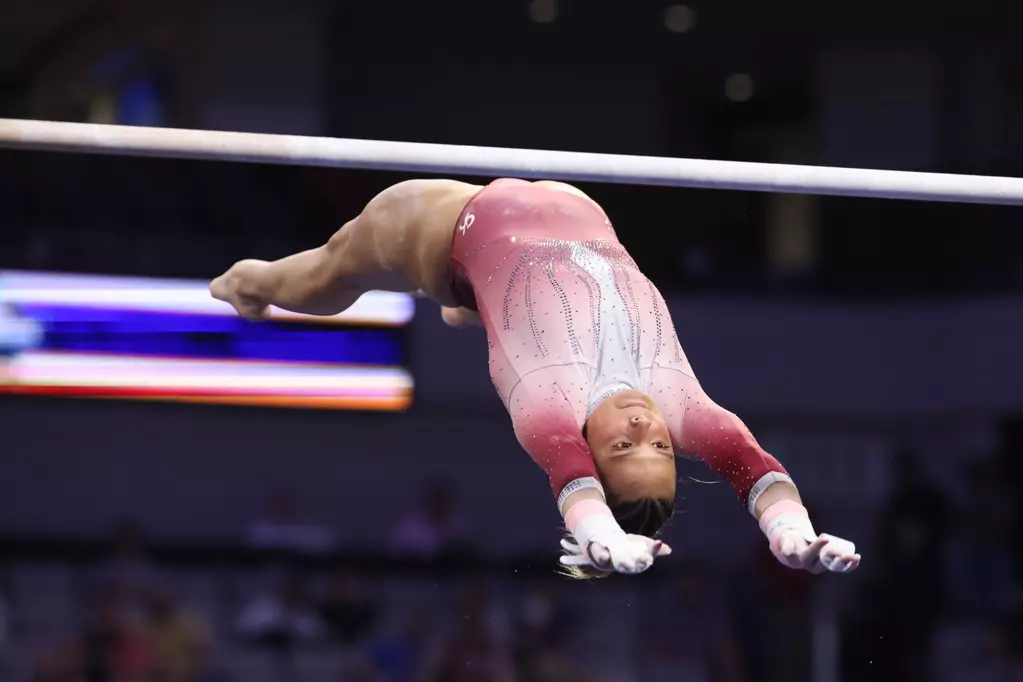The oldest living quarterback in Alabama history never suited up in pads. Instead, the quarterback wore rolled-up jeans, a shirt and tennis shoes while competing on the field of the now-named Bryant-Denny Stadium.
This quarterback never even appeared in an Alabama men’s football game.
Marie Fikes Carastro, 89, is the oldest living quarterback in Alabama history. She – yes, she – played in the 1948 Honey Bowl, a game between female students on Alabama’s campus. The upperclassmen played for the team called the Bumble Bees, while underclassmen played for the Hummingbirds.
Carastro quarterbacked the Hummingbirds, who ended up losing in the third and final Honey Bowl.
“Everyone was always excited about girls playing football,” Carastro said. “It was just like when you go to one of Alabama’s games and there’s a lot of excitement. We wanted to win.”
At age 89, her March 28th birthday makes her one year and eight months older than Clell Hobson, the second-oldest living quarterback. Hobson quarterbacked the men’s team for coach Harold Drew in 1951 and 1952.
She graduated from Alabama in 1950 with a major in home economics.
This year marks the 70th anniversary of the final Honey Bowl. The game was taken away by the dean of the women’s college, who decided it was “not lady-like.”
Before the game was stopped, Carastro played to have as much fun as possible. She didn’t care about what other people thought.
“It was just for my own satisfaction,” Carastro said. “Those were the things that I enjoyed doing. We all have our likes.”
Growing up, Carastro played basketball and was a majorette in the band. She didn’t have a baton to start practicing, so she broke a broom in half to twirl it so she could get better.
Carastro always found a way to achieve what she wanted. She quarterbacked the underclassmen, and her competitive spirit came out.
“I would have liked to do it again,” Carastro said. “It was exciting and fun. I didn’t see it as ‘not lady-like.’”
This wasn’t the only example of Carastro breaking away from the mold either. Her brother was a pilot in the Air Force during World War II. Carastro herself became interested in planes, but no one thought she should be allowed to fly.
“I ended up taking lessons and buying my own 140,” Carastro said. “How many people, how many women do you think were flying airplanes in the 1940s? Not many. So, I just wanted to do all of these things that I wasn’t supposed to.”
Playing football and flying planes were things that normal women didn’t do. It had only been 40 years since women were even allowed to attend Alabama.
Carastro didn’t set out to prove a point, however. Her interests were her interests.
“It was for her,” said her niece, Kay Reyes. “It was not to prove anything to anybody.”
The game itself ended in a 7-0 win for the Honey Bees.
Alabama’s football team usually showed up to the game. They watched in the stands and cracked jokes as their female counterparts attempted to play football.
Women, even if it was for one game, got to show off their athleticism in front of thousands of people. For someone like Carastro, it was another way that she didn’t let people pigeonhole her.
“I learned how to ride motorcycles,” Carastro said. “I learned how to fly planes. I learned how to do all of those things that girls weren’t supposed to do.”
The Honey Bowl is something that has basically been erased from history. It seems like an insignificant event in the timeline of Alabama sports history because of the little attention it gets. Reyes wants her aunt to be recognized for her efforts in the game.
She’s currently lobbying to get Carastro a display in the Paul W. Bryant museum.
“I once paid my dollar to get in the museum and I found three spots,” Reyes said.
Reyes could be closer to accomplishing her goal.
While at a memorial dinner, Reyes ran into Paul Bryant Jr. and explained her aunt’s story to Bryant.
He loved it so much, in fact, that Bryant accompanied Reyes to go talk to the curator of the museum, who was also at the dinner to help Reyes lobby for the display.
Reyes is hopeful her aunt will get her recognition, even if it is a small display in the museum. For once, it will mean the Honey Bowl is recognized by someone other than the girls who loved playing in the game.
She will continue to fight for her aunt to be recognized.
“I told them, ‘Mr. Bryant likes the idea of a display,’” Reyes said. “Mr. Bryant then looked at him and said, ‘Whatever the lady says.’ I don’t know, but at that moment, it looked it will happen.”








